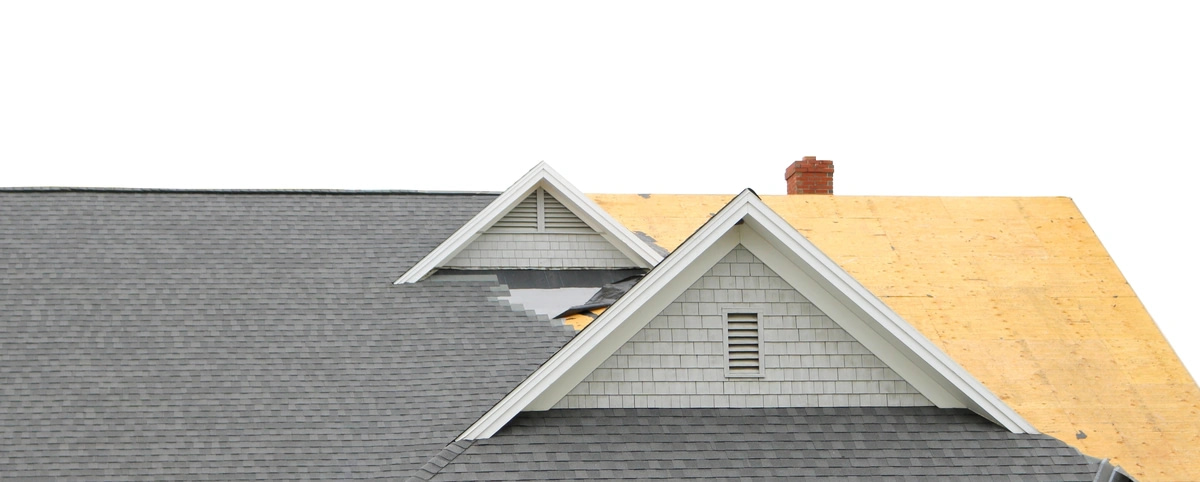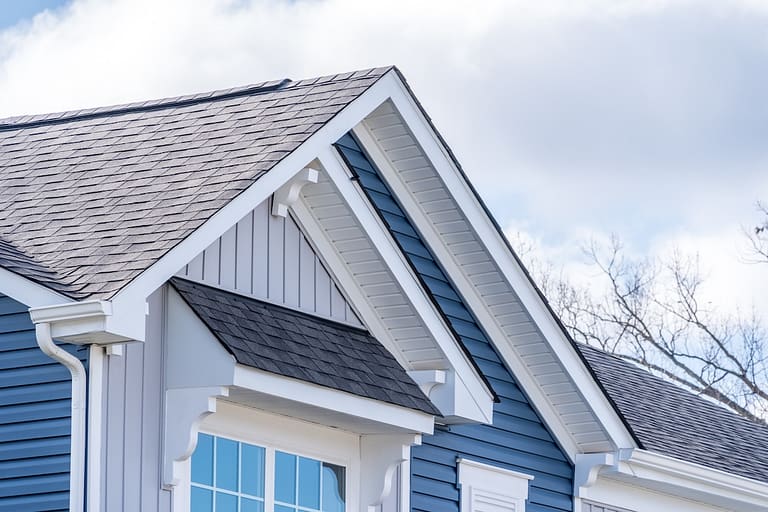A roof, functioning correctly, helps your home to remain standing. Repairs on a crumbling top will far outstrip regular maintenance costs and replacements in the long term.
That’s not to say that all roofs require replacement at the first sign of trouble. The process of roof replacement is long, complicated, and costly. The critical question for you will be to decide when the time has come for complete removal and architectural reconstruction.
Fortunately, we are here to help.
(Caution: no one saying you need a new roof will provide you with an exact cost because, like an old car, all roofs “need” work, some more than others.)
Keep reading as we walk you through the step-by-step roof replacement process you can expect when you engage in the roof replacement.
When to Start the Roof Replacement Process

Knowing when to get a roof replacement is critical to preventing further damage to your home. While the average lifespan of a roof is between 20 and 25 years, other signs indicate it’s time for a replacement. Keep an eye out for the following indicators:
- 🧓Age: As mentioned earlier, if your roof is approaching or has surpassed its average lifespan, it’s time to consider getting a replacement. Even if your roof appears in good condition, it may have hidden issues that can lead to problems. Proactively replacing an aging roof can avoid costly repairs or damage caused by leaks.
- 💧Leaks: One of the most obvious signs that you need a new roof is the presence of water stains on your ceiling or water dripping into your home during rainstorms. These leaks indicate that your roof is no longer effectively retaining moisture and needs replacing. Ignoring this issue can result in water damage to your home’s interior and even structural problems.
- 🔨Damaged Shingles: Inspect your roof regularly to check for signs of damage. Missing, cracked, or curling shingles are indications of a deteriorating roof that likely requires replacement. Damaged shingles can compromise the integrity of your roof and leave it vulnerable to leaks and further damage. It’s best to address these issues promptly to prevent more significant problems in the future.
- 🍄Mold and Mildew: Excessive mold or mildew growth on your roof can indicate underlying moisture problems. If left unchecked, these issues can further deteriorate your roof’s structure and the integrity of your home. Ultimately, it’s essential to address the cause of the moisture and replace your roof to prevent mold and mildew growth.
By paying attention to these signs and addressing them promptly, you can ensure the longevity and safety of your home. A roof replacement may seem significant, but protecting your property is a worthwhile investment.
The Step-by-Step Guide to Roof Replacement
Now that you understand when to get a roof replacement let’s delve into the step-by-step guide to the roof replacement process. This guide will give you a better understanding of what to expect during the roof replacement project at your home:
1) Roof Inspection
The first step in the roof replacement process is to hire a professional roofing contractor to assess the condition of your roof. The roofing contractor will inspect the roof’s structure, identify any existing issues, and provide an estimate for the replacement. Choosing a reputable roofing contractor with experience in roof replacements is crucial to ensure a successful project.
2) Material Selection
Once you have decided to proceed with the roof replacement, the next step is to select the suitable roofing material for your needs. Asphalt shingles are the most popular choice due to their affordability, durability, and versatility. However, other options are available, such as metal roofing, clay tiles, and slate, each with benefits and considerations. Your roofing contractor can guide you in selecting the material best suits your budget, climate, and aesthetic preferences.
3) Removing the Old Roof
Before the new roof can be installed, the existing roof must be completely stripped off. This involves removing the old shingles, underlayment, and any damaged materials. During this process, the roofing team will also assess the roof deck for any underlying damage that needs to be repaired or replaced.
4) Repairing the Roof Deck
The roof deck may sometimes have rotten or damaged sections that must be addressed before replacement. The roofing contractor will repair or replace the damaged areas to ensure a solid foundation for the new roof.
5) Install New Underlayment
Once the roof deck is in good condition, the next step is to install the underlayment. The underlayment is a moisture barrier that adds an extra layer of protection between the roof deck and the shingles. It helps prevent water infiltration and extends the lifespan of the roof.
The Cost of Roof Replacement

The cost of a roof replacement project can vary depending on several factors. Understanding these factors can help you estimate the potential expenses and plan your budget accordingly.
- Roof Size: The size of your roof is a significant factor contributing to the overall cost of the replacement. Larger roofs require more materials and labor, which can increase the price.
- Roofing Material: The choice of roofing material will impact the replacement cost. Asphalt shingles are generally the most affordable option, as they are widely available and relatively easy to install. Metal roofs, clay tiles, and other premium materials are more expensive due to their higher manufacturing and installation costs.
- Roof Complexity: The complexity of your roof design can affect the replacement cost. Steep slopes, multiple levels, and chimneys, skylights, or dormers can make the installation more challenging and time-consuming for the roofing team, resulting in higher labor costs.
- Removal and Disposal: The cost of removing and disposing of your old roof materials should be factored into the total project cost. This includes the shingles, underlayment, and other components that must be discarded.
Replace Your Roof on Time
A roof replacement is essential to your home’s longevity, safety, and curb appeal. By understanding when to engage in the roof replacement process, following a step-by-step guide, and considering the cost factors, you can make informed decisions and choose the best course of action for your home.
Protect your investment and ensure your home’s comfort and security by scheduling a roof replacement when necessary. Remember, the right time to replace your roof is before it starts causing problems. Visit the Johnson Restoration website today to learn more!






